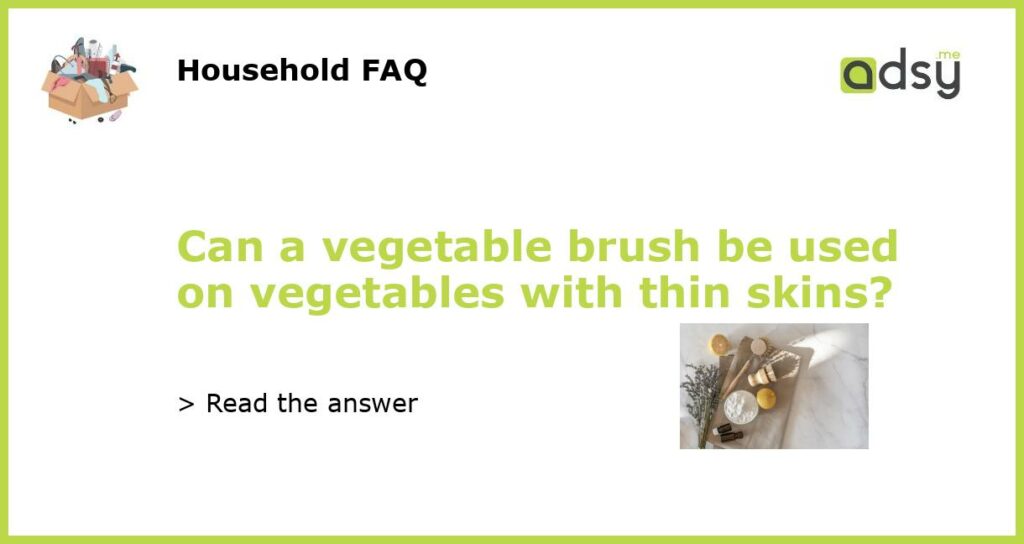Yes, a vegetable brush can be used on vegetables with thin skins
Vegetable brushes are commonly used in the kitchen to scrub and clean the skin of various vegetables. They are especially useful for removing dirt, pesticides, and other contaminants that may be present on the surface of fruits and vegetables, regardless of the thickness of their skin.
The bristles of a vegetable brush are designed to be tough enough to remove dirt and debris, while still being gentle enough to avoid damaging delicate produce. This makes them suitable for use on vegetables with thin skins, such as tomatoes, cucumbers, and zucchini.
Choosing the right vegetable brush
When selecting a vegetable brush, it’s important to choose one with bristles that are firm enough to effectively clean the produce, but not so stiff that they will damage the skin. Look for a brush with bristles that are made from natural materials, such as coconut fibers or tampico fibers, as they tend to be more gentle on delicate produce.
It’s also a good idea to choose a vegetable brush with a comfortable grip, as this will make it easier to use and reduce the risk of accidental slipping or dropping during use. Some vegetable brushes also come with additional features, such as a built-in scraper or a smaller brush for cleaning hard-to-reach areas.
How to use a vegetable brush
Using a vegetable brush is simple. Start by rinsing the produce under cool running water to remove any loose dirt or debris. Then, firmly hold the vegetable brush and scrub the surface of the vegetable in a circular motion, applying gentle pressure to remove any remaining dirt or contaminants.
For vegetables with thin skins, take care to scrub gently to avoid damaging the skin. If the skin is particularly delicate, you can also try using the vegetable brush with a light touch or using a softer bristle brush.
After scrubbing the vegetable, be sure to rinse it thoroughly under cool running water to remove any loosened dirt or debris. This will help to ensure that the vegetable is clean and ready to be cooked or eaten. You can then pat the vegetable dry with a clean towel or allow it to air dry.
Benefits of using a vegetable brush
Using a vegetable brush to clean your produce offers several benefits. Firstly, it helps to remove dirt, pesticides, and other contaminants that may be present on the surface of the vegetables. This can help to reduce your exposure to potentially harmful substances, as well as improve the overall cleanliness and safety of your produce.
Additionally, using a vegetable brush can help to enhance the flavor and texture of your vegetables. By removing dirt and debris from the surface, you can improve the appearance and taste of your produce. In some cases, scrubbing the skin of certain vegetables, such as potatoes, can also help to remove excess starch, resulting in a crispier and more flavorful end product.
Other methods for cleaning vegetables with thin skins
While a vegetable brush is an effective tool for cleaning vegetables with thin skins, there are also other methods that can be used. For example, you can use your hands to rub the produce under running water, which can help to remove dirt and contaminants.
Alternatively, you can soak the vegetables in a bowl of cool water, gently agitating them to help dislodge any dirt or debris. After soaking, rinse the vegetables under running water to remove any loosened dirt or contaminants. However, it’s important to note that soaking produce for too long or in warm water can cause it to lose some of its nutritional value.
Overall, whether you choose to use a vegetable brush or another cleaning method, the key is to ensure that your produce is thoroughly cleaned before consuming or cooking. This can help to improve the safety, flavor, and overall enjoyment of your fruits and vegetables.






